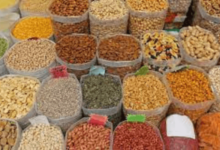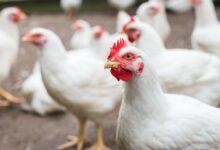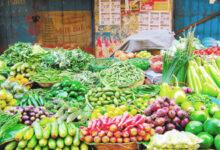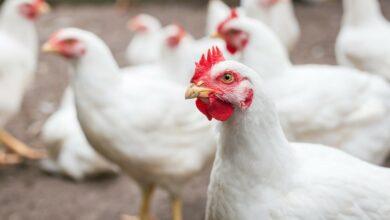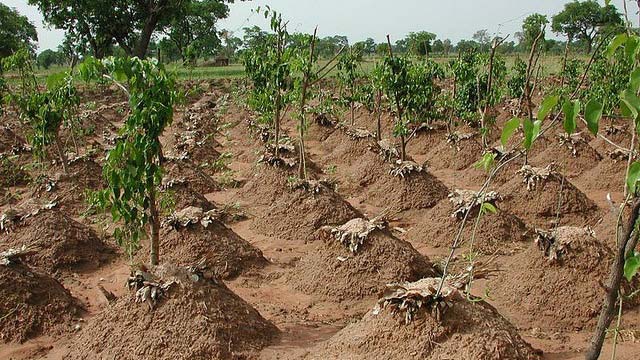
How to plant yam in Nigeria
Nigeria is recorded as the world’s largest producer of yams, making over 70 to 76 percent of the world production. In 1985, Nigeria produced 18.3 million tones of yam from 1.5 million hectares, representing 73.8 percent of total yam production in Africa, according to the Food and Agricultural Organization report.
There are certain factors you should consider if you want to start planting yam anywhere in the country. These factors include land, soil, season for planting and cultivating the yam, the capital for starting, and more.
👉 Relocate to Canada Today!
Live, Study and Work in Canada. No Payment is Required! Hurry Now click here to Apply >> Immigrate to CanadaSteps You Can Take to Plant Yam in Nigeria

You should take the following steps if you desire to plant yam in Nigeria:
1. Preparation of the land or soil
If you have about one hectare of land, you will have to prepare the soil for planting the yam seeds. It is necessary to clear bushes and grasses before rainy season if there are any. The weeds would be allowed to dry up with the soil to form organic manure. The months of February and April are best to plant yams when the rainy season is just beginning.
Prepare the ridge beds and measure one meter high and one meter gap from each heap or ridge. In the case of sloping or rolling fields, follow the contour to construct the ridges in order to minimize soil erosion.
An upland well-drained field is the land suitable for planting yam, and the best soil for yam farming is sandy loam and silt loam soil. Any clay loam soil you intend to use must be rich in organic matter. You cannot later cultivate a stony hard soil if you plant yam on it.
Yams can also be grown in forest lands because most tropical region might be the best environment for growing yam tubers both in soil quality and climate conditions. Remove any hard objects that could obstruct the growth of the yam tuber while making the ridges.
2. Preparation of the Setts
Properly prepare the setts which are the whole tubers cut in pieces and used for planting. A small tuber can be planted whole, while a big tuber should be cut in pieces to the size of 60g to 100g. The bigger the sett used, the higher is the expected seed, but should not be too large to avoid wasting resources.
You should take your setts from healthy tubers of healthy plants. Don’t slice appropriate sett size but larger tubers can be sliced into desired sett size so that each sett has sufficient skin surface area. Head setts, middle setts, tail setts for the tuber pieces and whole setts for the whole tubers are the four types of setts that can be gotten and named according to their positions on the tuber.
👉 Relocate to Canada Today!
Live, Study and Work in Canada. No Payment is Required! Hurry Now click here to Apply >> Immigrate to CanadaTreat the cut sides of the setts with ash or with fungicide and air-dry them. Then plant the setts directly or pre-sprout them after you have dried them up.
3. Pre-Sprouting of Setts
Because the emergence period of most freshly prepared setts in the field lasts from 3 to 12 weeks, it is better to pre-sprout the setts before they are planted. This method assures the emergence of setts when planted and reduces expenses on weeding before sett emergence.
The procedure for pre-sprouting a sett requires that you dig a ditch in a clear shaded area under trees, under bananas, or under a shed constructed for the function. Place setts side by side in the ditch and cover with dry grasses or dry banana leaves. If there is no ditch dug, you can place setts side by side on the ground.
4. Plant the Yams
White yam is best planted in rainy season within the months of March and April, depending on the time the tuber dormancy is broken, as indicated by the sprouting of tubers under storage and upon beginning of rain in a particular area. That’s just the reason why the pre-sprouting process is best started ahead of the planting time, at least for 3 weeks.
The distance between the planted yams should be one meter by one meter at a depth of about ten centimeters. When planting coincides with a dry spell, setts are planted in any orientation about fifteen centimeters deep if the field will not be mulched. For one hectare of farmland, about 20,000 to 27,778 setts are needed.
If the field will not be irrigated and mulched, setts are usually planted at the beginning of rain. You can use the same planting distance and depth for non-pre-sprouted setts. Setts should be oriented so that sprouts are up during planting. The cut surface has to face the ground in order to achieve this.
In staggered planting, the field is divided into four up to six sections — a section for a batch of setts ready for planting. The rate of sprouting of setts guides the size of each section and the time each section is prepared.
5. Weeding
The use of pre-sprouted setts, the application of mulch and the rate of weed growth determine the number of times a yam farm needs to be weeded. You can weed 2 to 3 times if non pre-sprouted setts are used and the field is not mulched. The weeding operations are needed before the yam canopy covers the space between rows to partially hold back the growth of the weed.
You can decide to only weed two times in about two months apart, that’s if pre-sprouted setts are used and the field is not mulched. You can use herbicide in some areas, or maintain the usual hand-tools.
6. Harvesting
Your yams are ready for harvest when the stalk and leaves display yellowish signs of drying up. Your harvest time can start from late November all through to late February the following year. It is advisable to first harvest tubers you want to sell or use even before foliage yellowing starts, and then you can later harvest the ones you intend to use as setts for next season’s planting.
You can use a hoe or similar hand-tool to dig around the tuber to set it free from the soil. When you bring out the tuber with some soil around it, you will need to cut the vine at the base to complete the harvesting.
Harvesting of your yam should be carefully done to avoid injuring the yam while digging as this may reduce the market value and cause decay.
Conclusion
You will hardly find a person who doesn’t eat yam in Nigeria, because yam is one of the best sources of starch.
It is quite lucrative to take your tubers of yam to the market to sell and make profits from them.
I hope the above step-by-step guide on how to plant yam in Nigeria will help you go about this business venture easily.
You can tell us in the comment box how the information in this post has helped you, or about any experience you’ve had so far with yam farming, cultivation and business.
